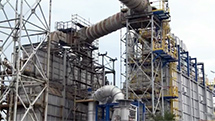Exploration risks
Risks from estimating the resources and reserves of hydrocarbons discovered by exploration wells
– due to uncertainty involved in the evaluation of formation properties affecting the volume of resources, we provide three estimate cases for reserves (1P/2P/3P (1)) and for undiscovered prospective resources (P10/P50/P90 (2)), in accordance with the SPE 2007 international classification framework.
It is possible that the presence of resources inferred from geological and seismic data is not confirmed by the estimates made after a well is drilled and that the resources will be smaller than expected. After a discovery is tested through successive wells, there is also a risk that its estimated resources will be lesser due to unfavourable changes in its formation properties. One of the methods of ongoing risk management in the estimation of reserves and resources is to identify and map the distribution of formation properties indicating the presence of hydrocarbon accumulations, i.e. area and thickness, porosity and hydrocarbon saturation. Estimates are also made after a new well is drilled on a prospect or after events occur that may affect the size of reserves.
Risk of drilling a dry well (without hydrocarbon flow)
– in assessing the chance of success and discovery of a hydrocarbon accumulation, we use the PoS (probability of success) ratio. The PoS ratio is calculated on the basis of four factors, which are assigned probability on a scale of 0% – 100%. Another method of ongoing risk management is to perform geological analyses of an exploration well. Also, reservoir engineering analyses using numerical methods (production simulations) are performed in order to determine the depletion rate in the individual parts of the formation before a decision is made whether and where to drill another production well.
(1) 1P reserves – proved reserves, having a 90% probability of being produced; 2P – proved and probable reserves, having a 50% probability of being produced; 3P – proved, probable and possible reserves, having a 10% probability of being produced.
(2) P90 – reserve with a 90% certainty/probability of being produced; P50 – reserve with a 50% certainty/probability of being produced; P10 – reserve with a 10% certainty/probability of being produced.





















 E-mail
E-mail Facebook
Facebook Google+
Google+ Twitter
Twitter